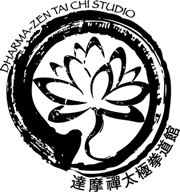Here is a news article from yesterday:
http://www.boston.com/news/health/blog/2010/08/tai_chi_appears.html
Posted by Gideon Gil August 18, 2010
By Patrick G. Lee, Globe Correspondent
For fibromyalgia sufferers who disdain the sterile smell of gyms, a study published today in the New England Journal of Medicine offers another option to deal with the constant pain and fatigue: the ancient Chinese martial art of tai chi.
Fibromyalgia is a chronic pain disorder that interrupts sleep and causes stiffness and other psychological and physical issues. Exercise, along with behavioral therapy, wellness education, and medication are typically part of the multi-pronged treatments for the syndrome, but nothing has yet proved to be a silver bullet in eliminating the pain.
Tai chi involves meditation, deep breathing, and smooth, slow movements to enhance relaxation.
A small body of earlier research has indicated that non-traditional therapies, such as tai chi, could improve patients’ ability to manage pain and even overcome depression, but these studies were less rigorous than the new one.
This latest study, led by Dr. Chenchen Wang, an associate professor at Tufts University School of Medicine, was a randomized trial geared specifically to explore tai chi’s effect on fibromyalgia.
Wang’s study was conducted between July 2007 and May 2009 at Tufts Medical Center, with 66 patients with fibromyalgia. Half took part in twice-a-week, hour-long tai chi sessions for 12 weeks, and the other half was exposed to an education and stretching routine for the same duration.
Throughout the 12 weeks, tai chi patients exhibited a dramatic decrease in their scores on a widely accepted questionnaire for assessing the severity of pain symptoms compared with those in the education and stretching group.
The study tracked outcomes in several other ways, and across nearly all measures, the tai chi patients exhibited significantly greater pain reduction than the other group.
Wang acknowledges that a larger and longer-term study is needed to determine whether the effects of tai chi are applicable to the general population.
But some researchers doubt that a definitive study will ever be possible: typical drug trials involve administering fake pills to some participants so as to account for the placebo effect, or the improvements that result solely from patients’ expectations that treatment will help them.
In the case of tai chi, a placebo approach would require the development of “sham tai chi,” or a version of tai chi that tricks participants into thinking they are learning true tai chi principles, but one that really has no effect on their symptoms.
And that is a slim possibility, said Dr. Gloria Yeh, an assistant professor of medicine at Beth Israel Deaconess Medical Center who wrote an editorial in the New England Journal that said the study was thorough but not definitive.
“Tai chi is a multi-component intervention,” she said in an interview. “It doesn’t just have that one active ingredient that we can isolate. It really has many, many different ingredients.”
Without a viable version of “sham tai chi,” future studies will not be able to definitively determine whether the benefits of tai chi stem from the actual practice itself, or merely from patients’ expectations that tai chi will help them manage their pain.
Even so, Wang said what matters most is that tai chi seems to help reduce fibromyalgia symptoms. “Complementary medicine is a little different than standard Western medicine,” she said. “[If] the patients feel better — symptoms improved, the quality of life improved — this is important, like with some acupuncture research. … Who cares about what the mechanism is?”
Both Wang and Yeh said they would at least suggest tai chi to their fibromyalgia patients, if only because it is an intractable syndrome that has so far eluded effective treatment with drugs.
“It may not be for everyone,” Yeh said. “But if they are interested in doing something else for themselves, there’s no reason not to try.”
